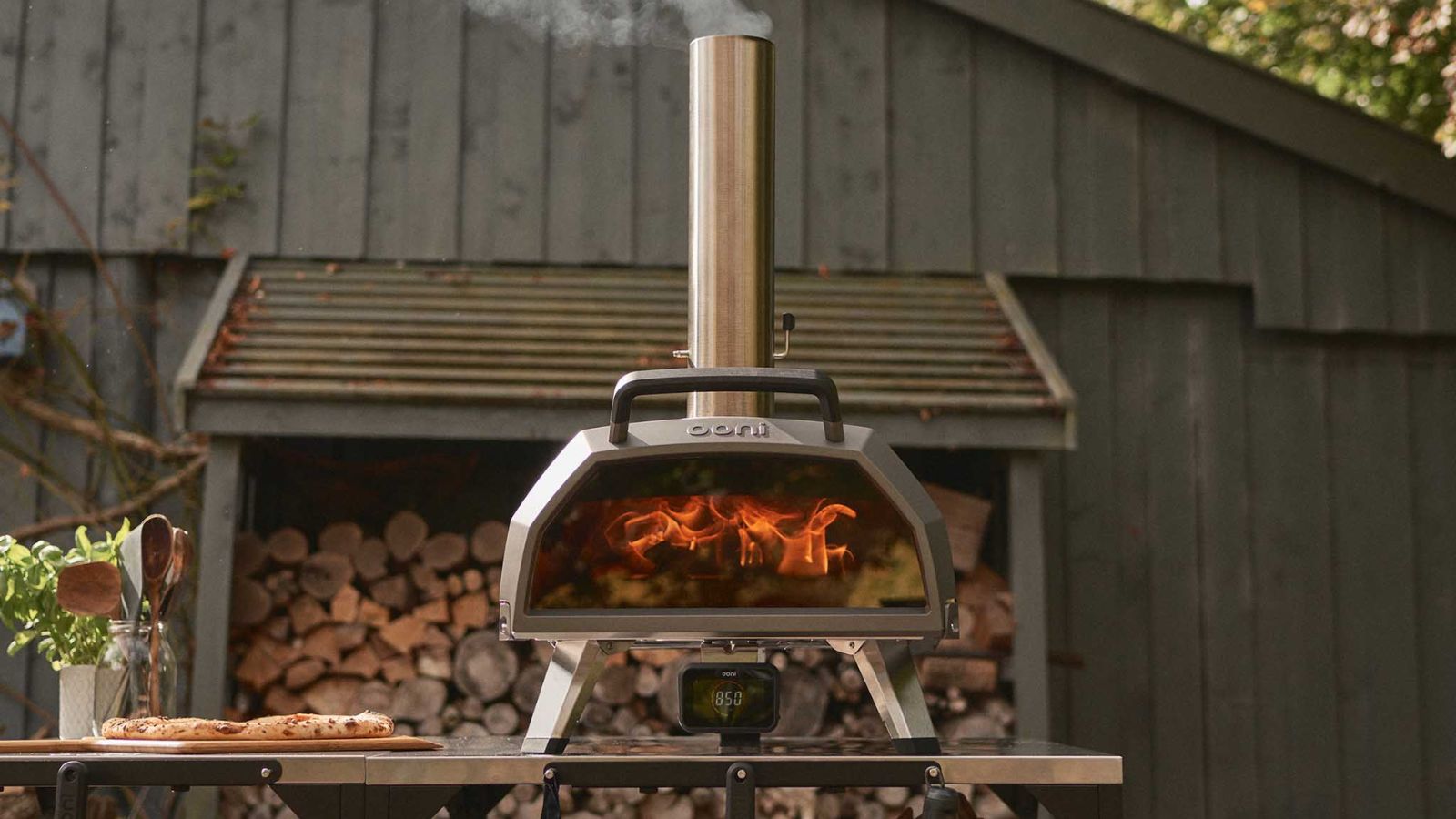
When Ooni announced the Karu 2 Pro, I was one of the first people in line to try it. I was dying to see if it could beat its predecessor, the Karu 16.
To be honest, I almost wanted to hate this oven. Ooni dominates our guides to the best pizza ovens and it feels like an advert to include the brand, even though test after test has shown that its ovens are exceptional. I wanted this oven to be mediocre so that we have something new to say about this brand; something that didn't feel like fawning.
But Ooni's new Karu 2 is almost flawless. After testing it on seven pizzas (including gluten-free dough) a flatbread, a calzone, grilled chicken, and even brownies, it's the best pizza oven I've tested. It will go straight in as the new reigning champion in our guide to the best pizza ovens.
Specifications
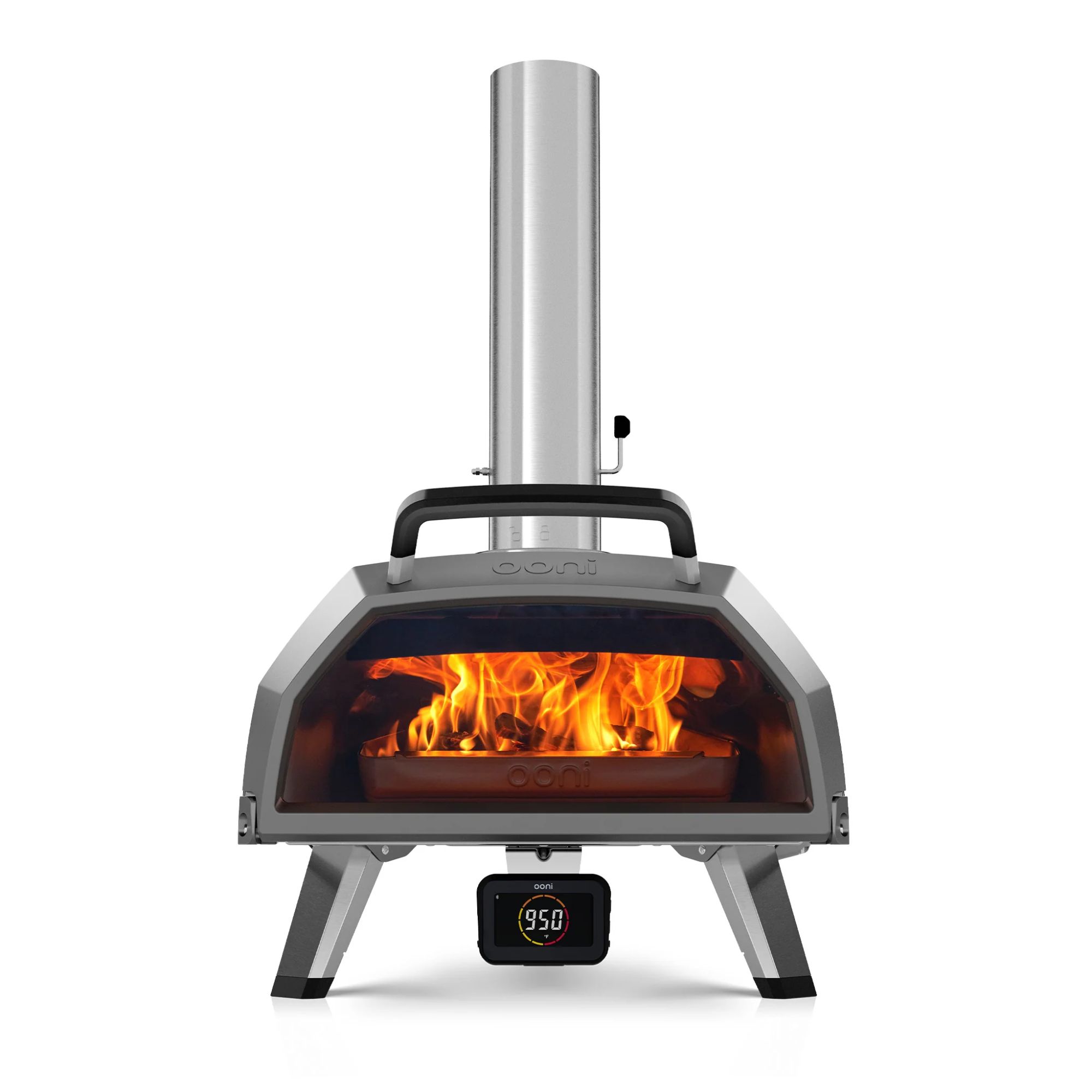
Who would it suit?
This oven would suit basically anyone looking for a good outdoor pizza oven. It's the quintessential pizza oven - it's fast and makes perfect pizza. I almost can't fault it.
The only caveat? It might not work if you're tight on space and budget. The kit that Ooni's PRs sent me included a bamboo peel, an aluminum peel, a gas conversion kit, and a thermometer gun. These were invaluable when testing, but they aren't included as standard, so you need to pay extra - on top of the $799 basic price. It's also large, so it won't work if you're cooking out of a courtyard garden.
Unboxing
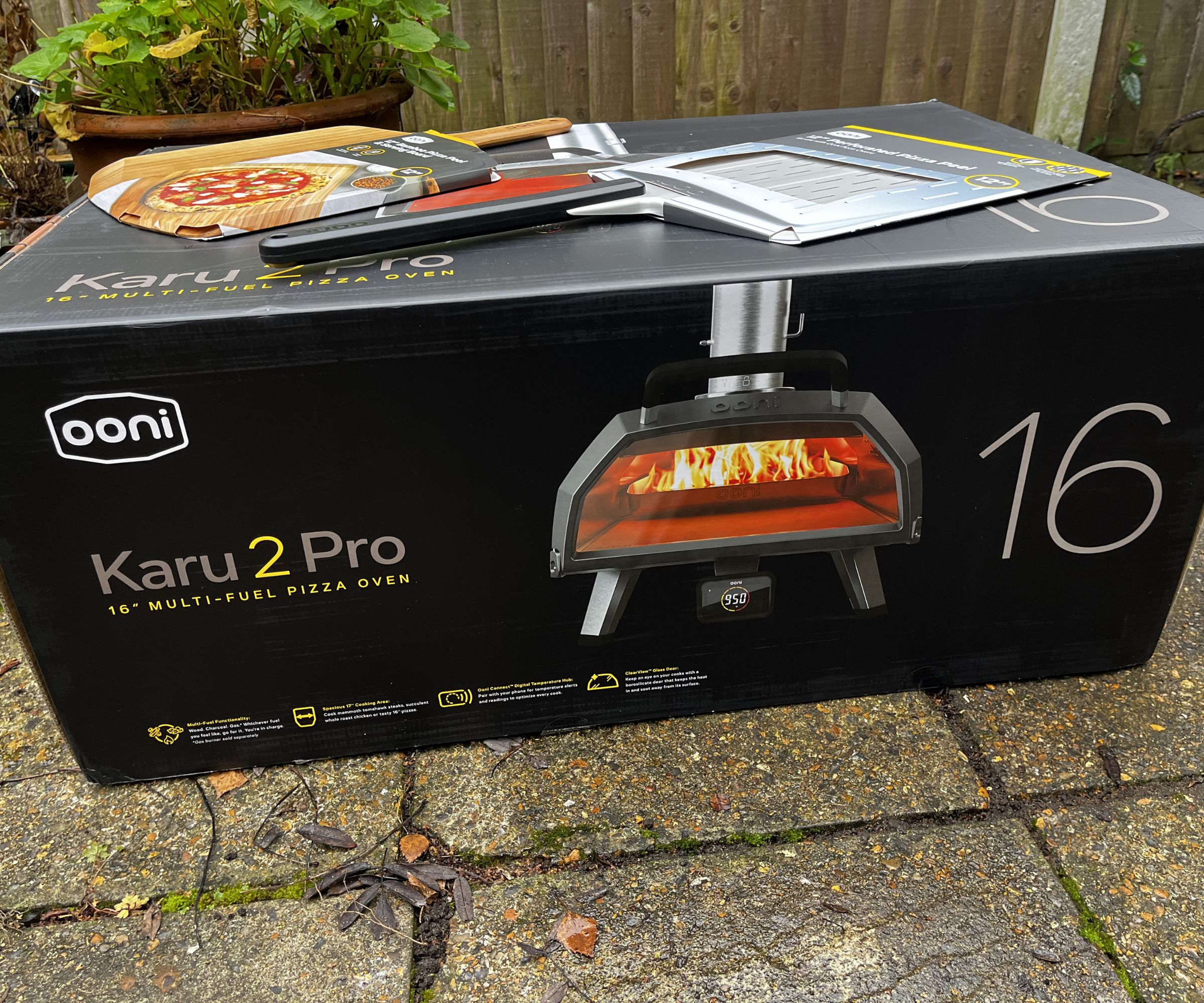
The Ooni Karu 2 Pro arrived in a huge box. It was almost intimidating, a large, 82 lb box that was a little tricky to move around. I had a trolley on hand that made moving the oven out to the yard much easier, but you might struggle without one.
Having said that, the rest of the setup was incredibly easy. I set up the table for the oven and it slid easily out of the box. It easily lifted out of the box and I was pleased to see that most of the crucial parts were already assembled - I didn't have to screw in the legs or do any difficult wiring.
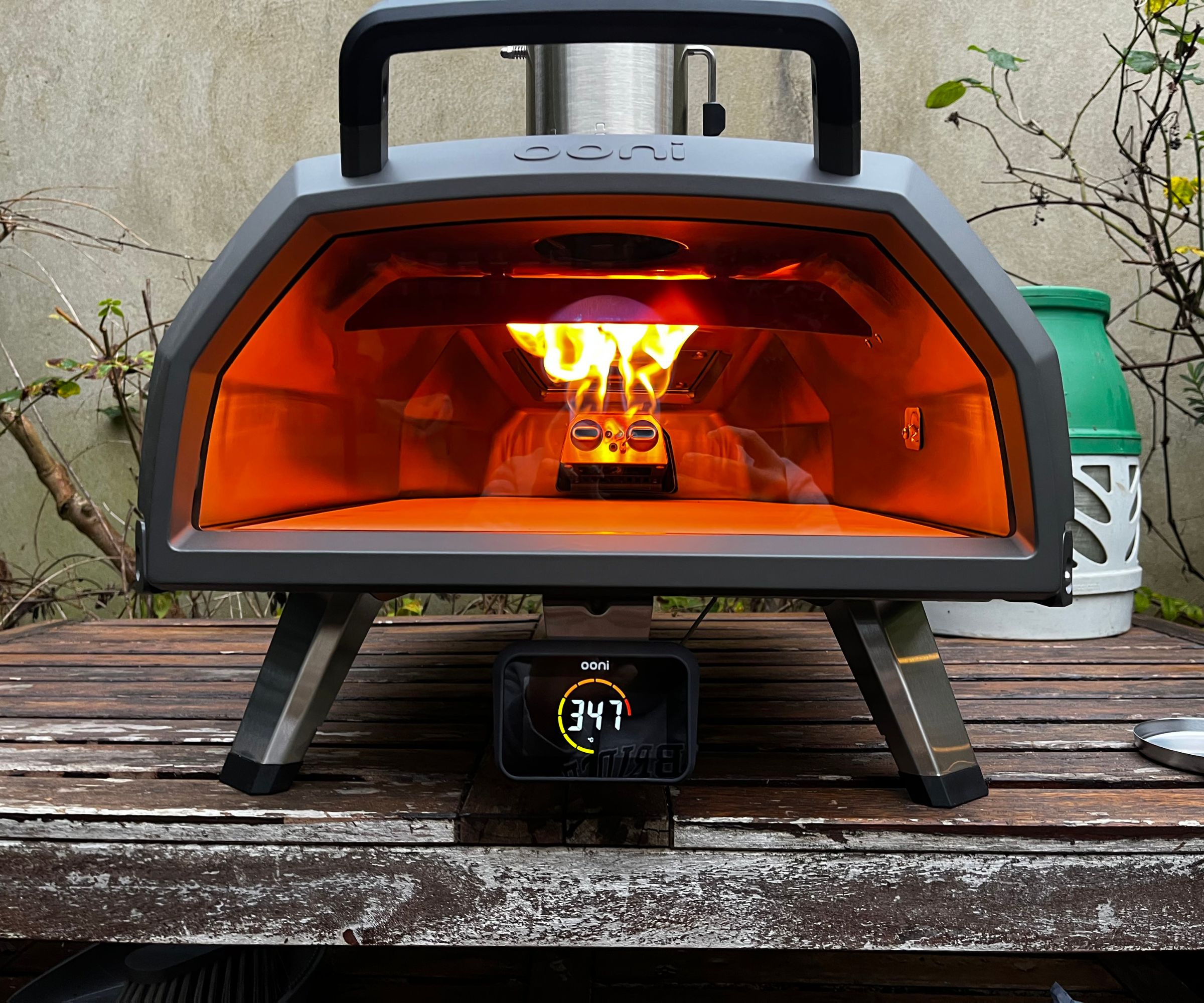
All I had to do was follow the instructions on the app. While I prefer a manual on paper - you lose your place in the app instructions if your phone auto-locks as you build - it was a relatively painless assembly. The only finicky part is clipping in the digital thermometer, but it's hardly arduous. The app said it would take half an hour, and it took 28 minutes - an excellent start.
Best of all, this oven is fast to heat. The stone reached Neapolitan temperature in around 15-20 minutes, which is much faster than other pizza ovens - a 4-minute heat time used to be the industry standard.
Test 1: Cheese pizza
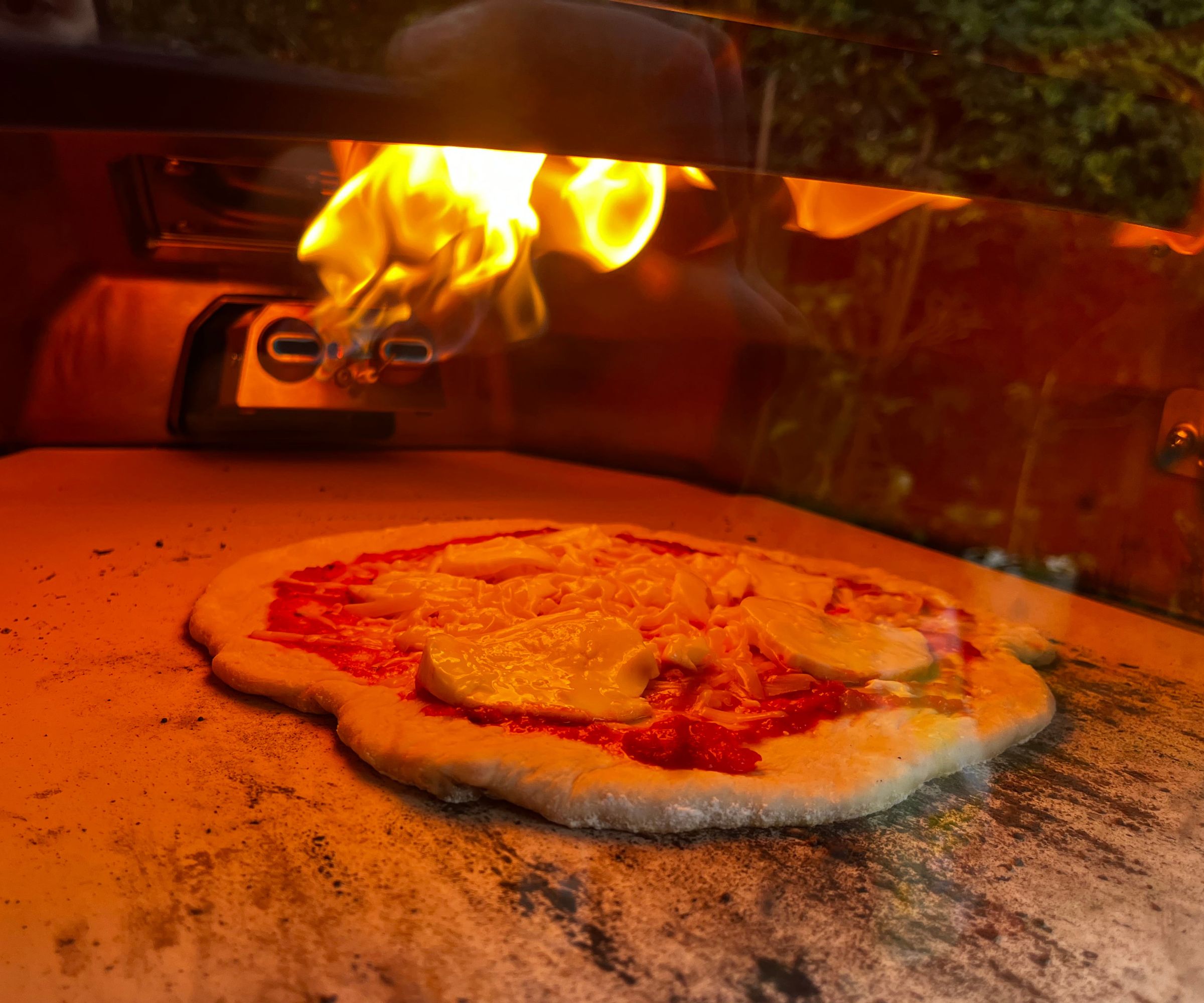
First up, the most important test of any pizza oven: a Neapolitan cheese pizza. Fail at this, and the review isn't worth finishing.
I made a simple pizza dough and topped it with tomato sauce, a mix of mozzarella and cheddar, and finished with rounds of mozzarella. The rest was simple - you just load it onto the pizza peel and launch it into the oven.
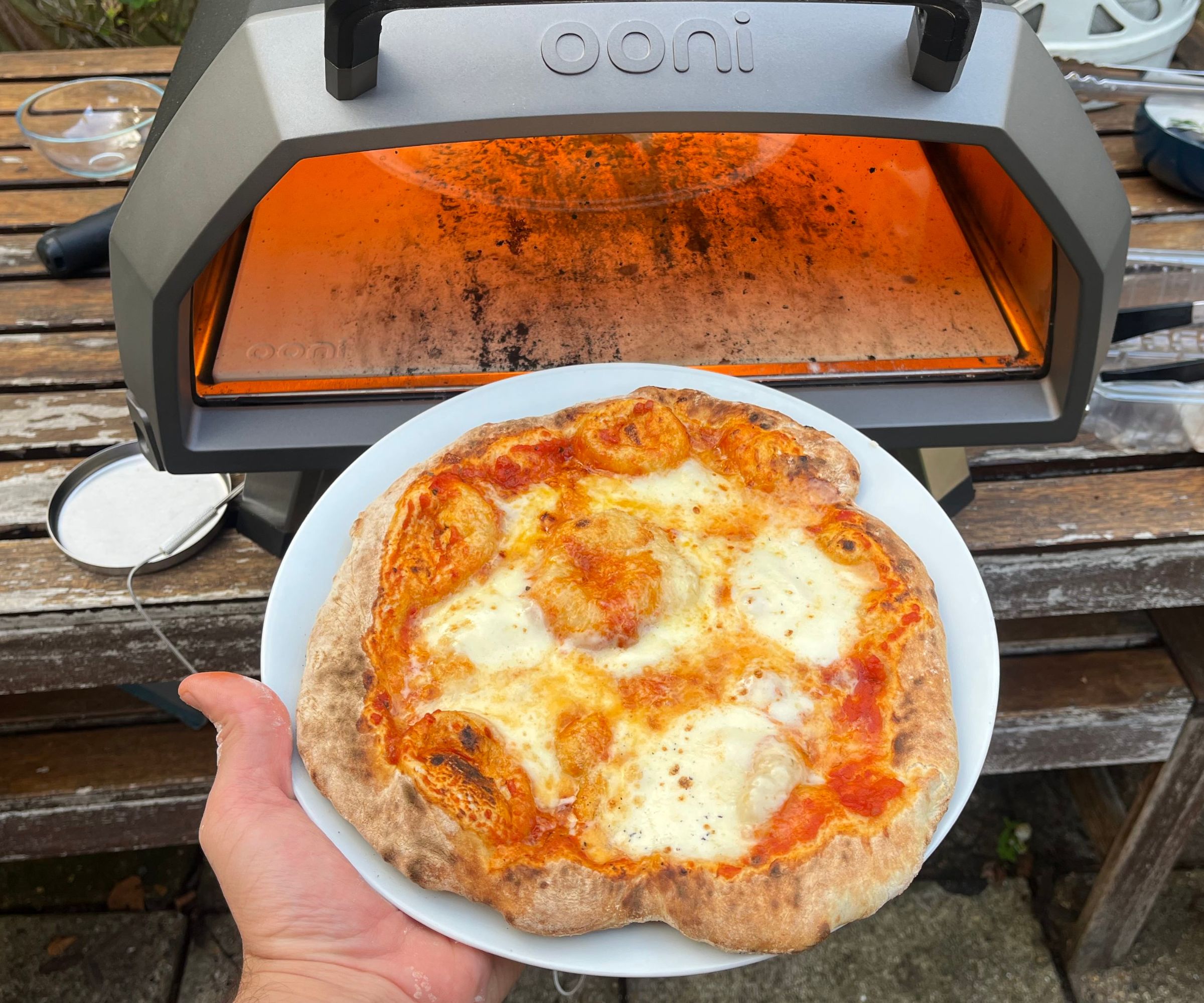
The result was better than expected. It cooked slightly faster than other ovens I've tried, taking a little over a minute for all of the cheese pizzas I tried. The dough quickly puffed up into a perfect crust and the cheese melted into a soft golden color.
It aced the taste test. A common issue in some pizza ovens is that they either over- or under-cook the sauce. Overcooked sauce dries out the pizza, and undercooked sauce makes the pizza doughy and wet. This oven was perfect. The door means that moisture is trapped in the air, which means the sauce was moist without being wet, softening the chewy pizza dough without overwhelming it. It was one of the best pizzas I've ever made, and I hadn't varied my usual recipe - it was all thanks to the oven.
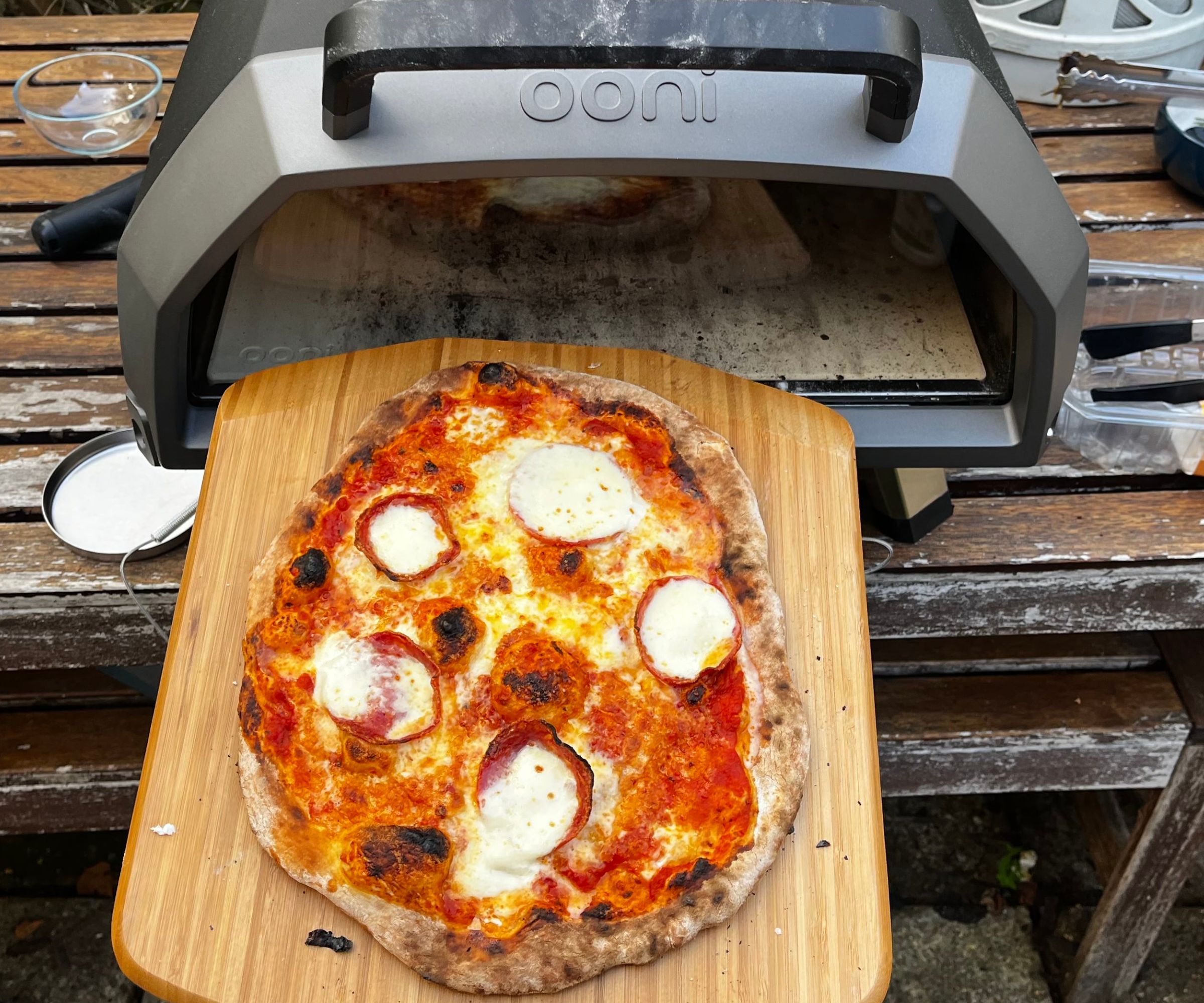
Test 2: Pepperoni
Next up, two pepperoni pizzas and it's the same procedure as the cheese pizza - but with slices of pepperoni. The test here was to see the aggression of the flame. Pepperoni is easy to burn, as it curls up towards the heat source and crisps on the edges. Pepperoni also puts out a lot of grease, which can make the dough far too moist.
But this wasn't an issue for the Karu 2 Pro. Much of the grease had evaporated, making for a delicious pizza that felt light and refreshing rather than heavy an oil. On one of the pizzas I tested, the pepperoni slices singed a little, but it wasn't catastrophic.
Test 3: Gluten free pizza
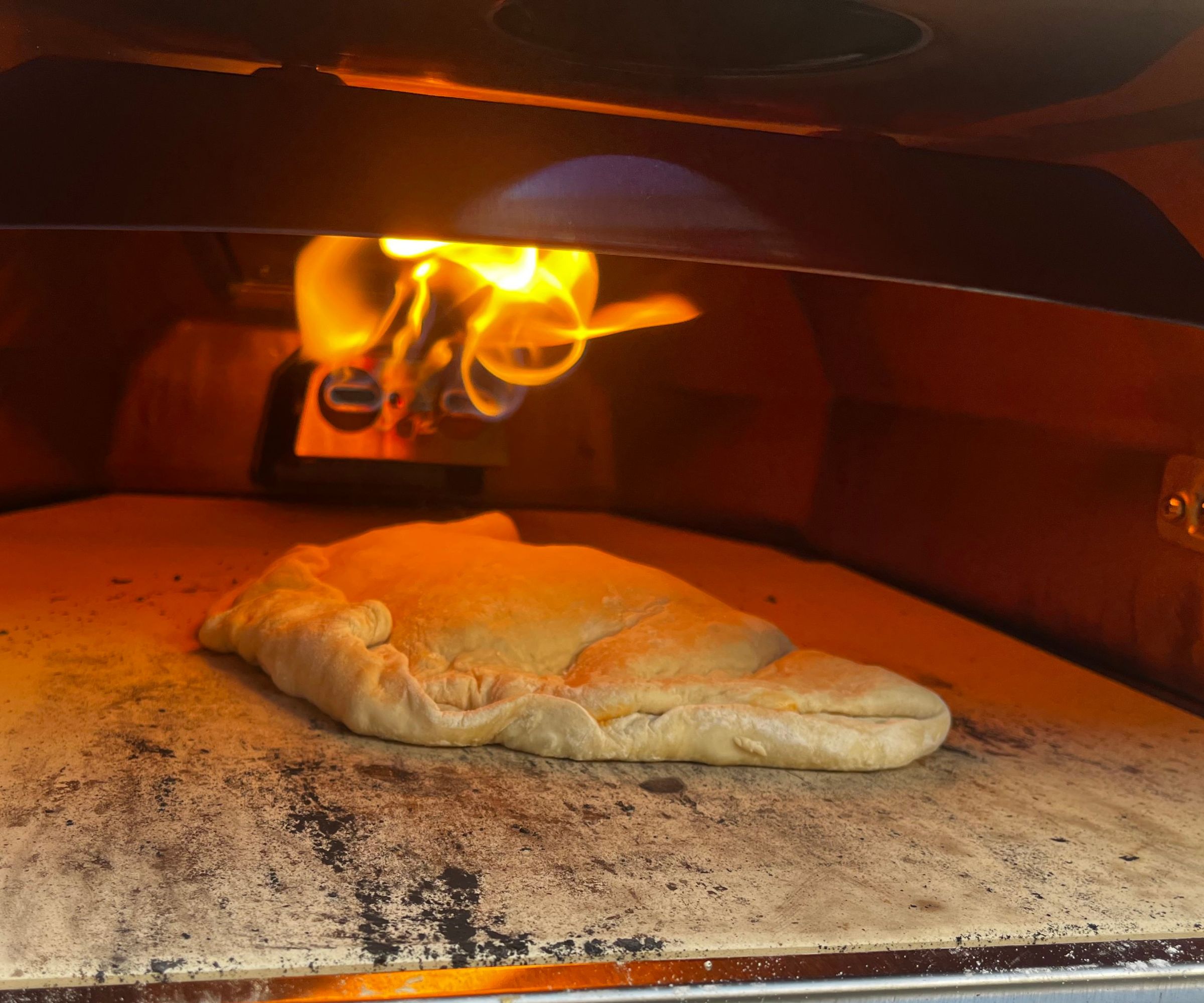
I wanted to test a gluten-free dough and I was also cooking for a celiac, so I tried Ooni's gluten-free dough recipe. It was very straightforward, a simple dough of water, yeast, and gluten-free flour (for those interested, I used the Antimo Caputo flour, available at Amazon, as recommended by Ooni). I was worried as I kneaded it because it looked very wet, even though it didn't feel wet to work with. I was worried that the moisture content in the dough would be too high for the stone and the crust wouldn't form and lift away from the surface.
Thankfully all my worries were unfounded. This is one of the best gluten-free meals I've made. The dough behaved almost exactly like a gluten dough - there were a few worrying seconds before it puffed up, but after about 40 seconds it was just like any other pizza I've made. There was excellent leopard-spotting on the crust and it was perfectly cooked all the way through, with beautiful striations through the dough. This oven can easily handle gluten-free food, so it's a good choice even if you can't eat gluten.
Test 4: Flatbread
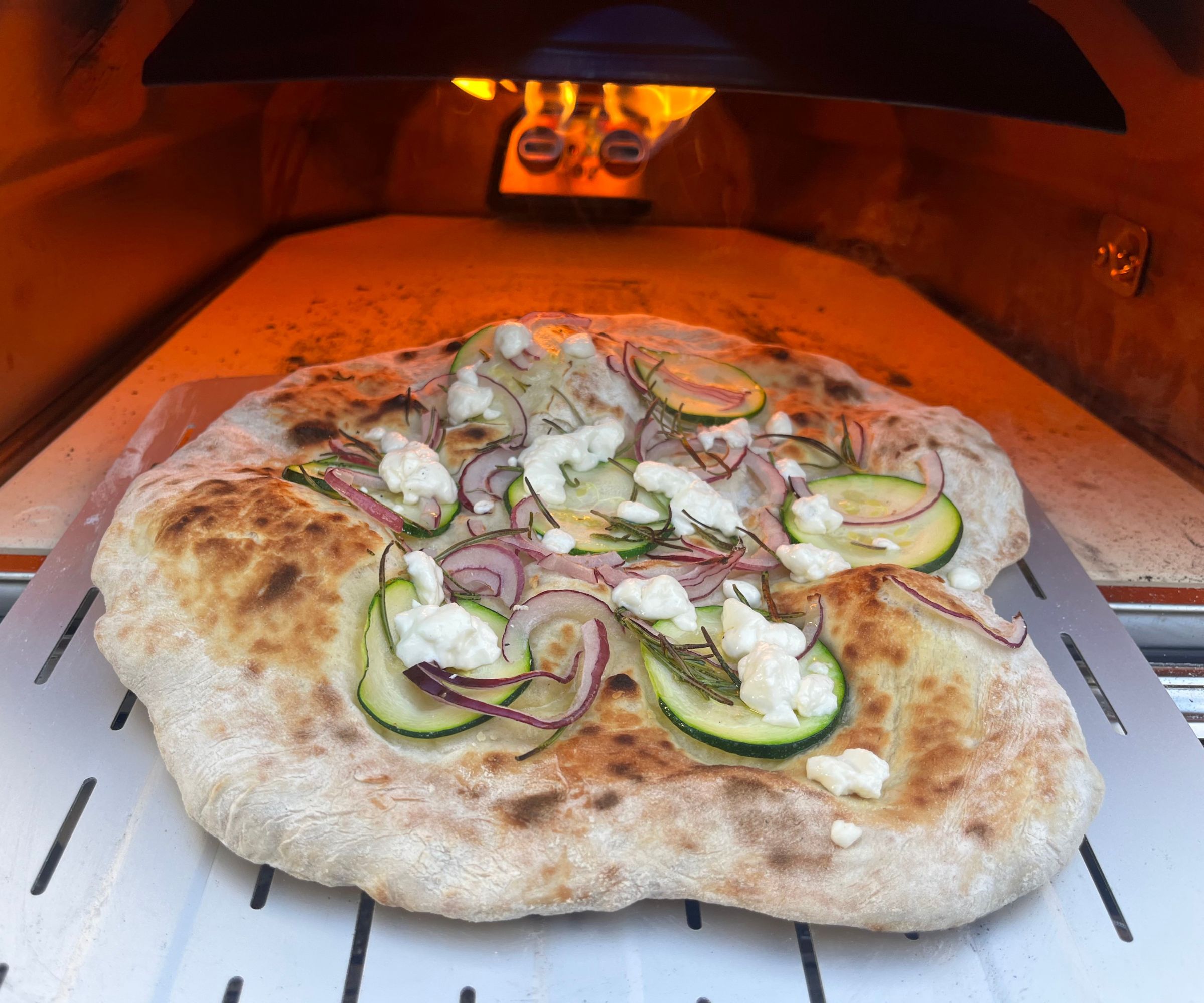
I wanted to see how the oven could handle a drier dough. Some pizza ovens are too aggressive and dry out pizzas, which means that they bake flatbreads into crispy, dry cookies rather than moist pizzas. To this end, I tried a flatbread dough topped off with red onions, rosemary, zucchini, goat's cheese, and a homemade balsamic glaze of vinegar and honey, drizzled with olive oil.
This was also perfect. The vegetables were perfectly cooked in seconds, maintaining moisture but developing a delicious char from the rolling flame. Paired with hummus, this was the perfect flatbread - another test passed flawlessly.
Test 5: Chicken thighs
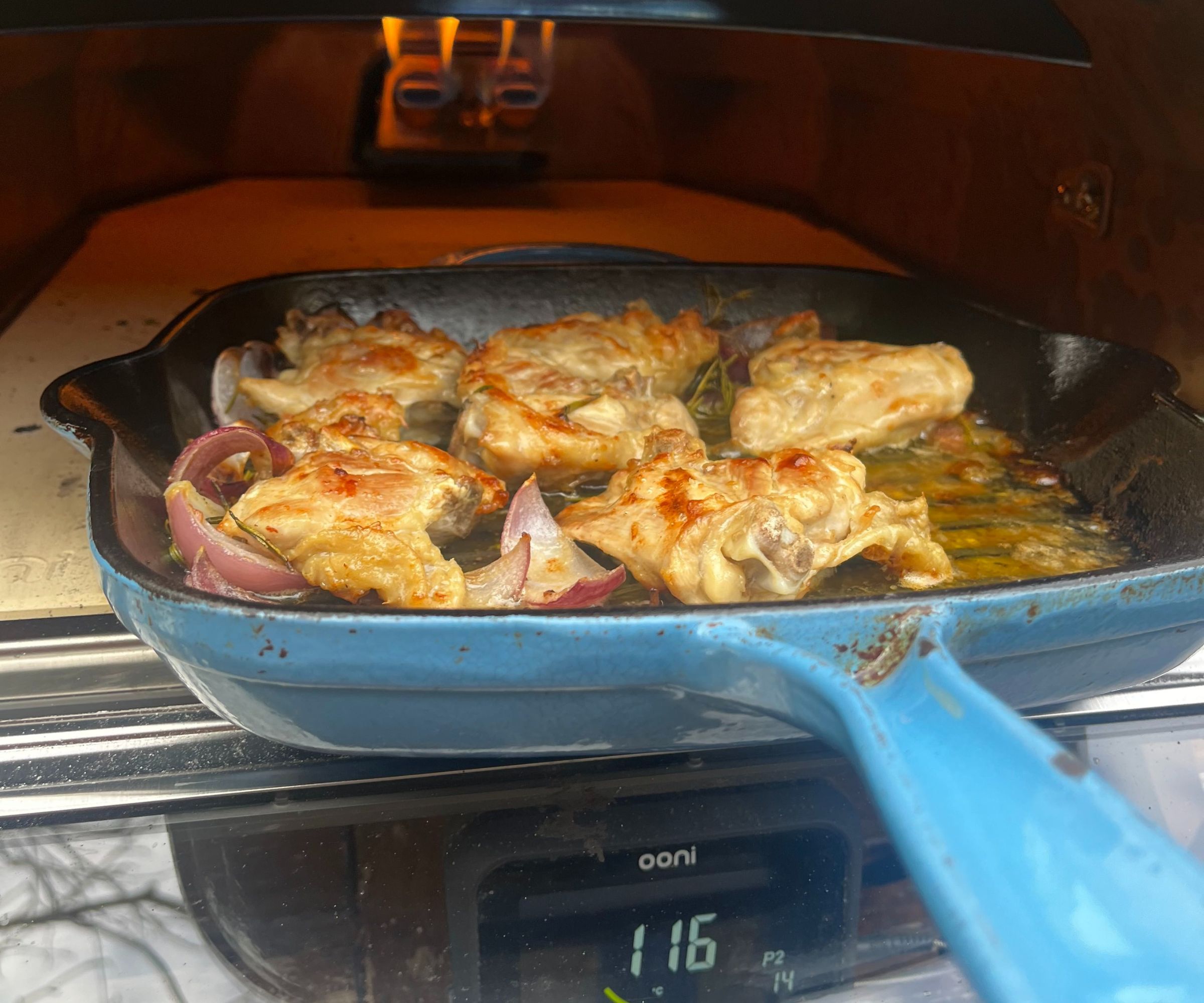
Pizza ovens have a bad reputation as single-use appliances, but they're really no different from any other oven, so I also tried to bake some chicken and onions.
Using Ooni's rosemary chicken thighs recipe, I heated a skillet in the oven and then cooed chicken thighs skin-down for three minutes. After that, I flipped them over, added rosemary and thick wedges of onion, then basted everything in butter.
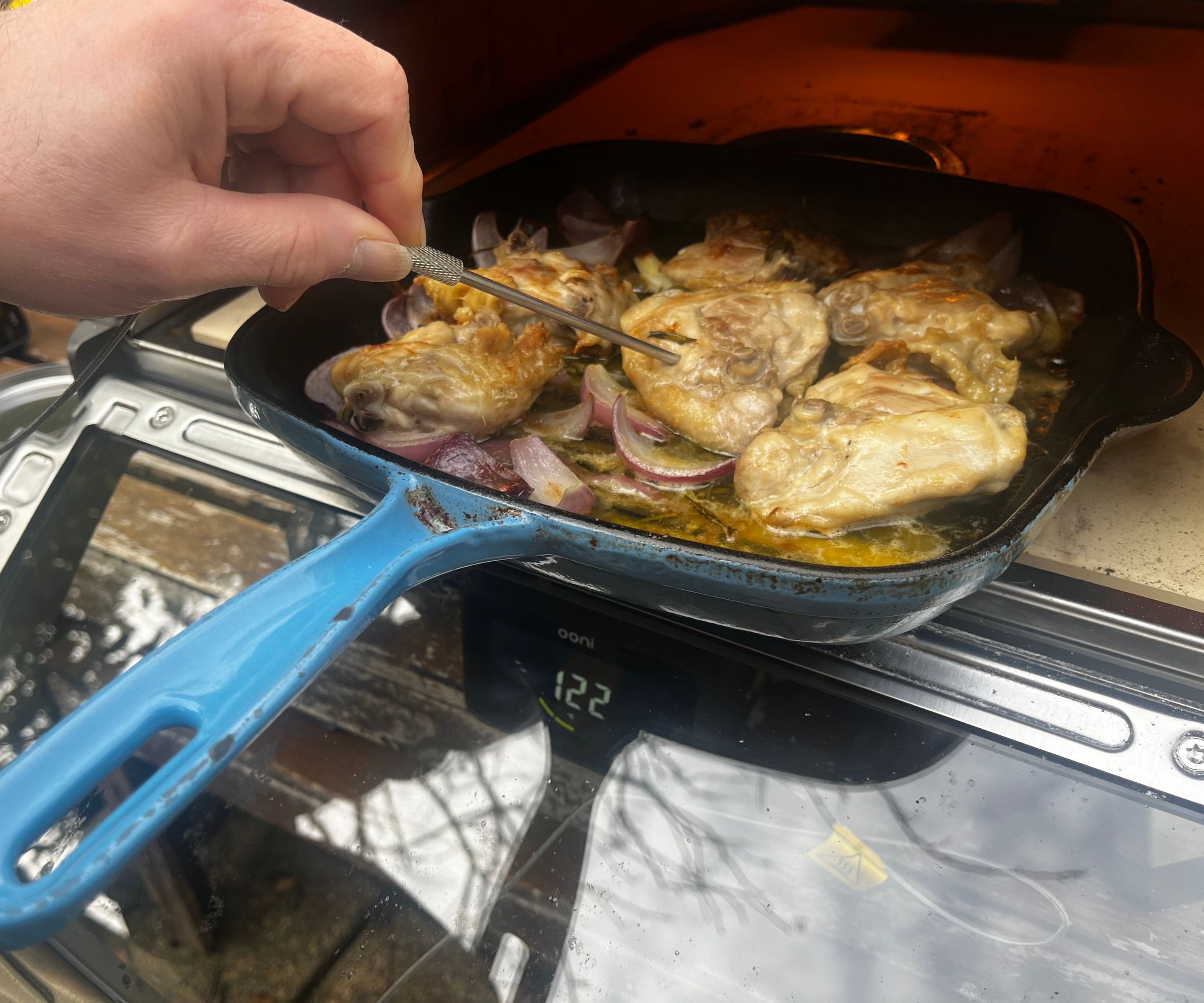
The result was remarkable - perfectly juicy chicken thighs with deliciously, crisp skin, bubbled to a perfect golden brown color by the flame. Best of all, it was much faster than the equivalent dish would've been in a traditional domestic oven. The pizza oven reaches such high temperatures that you can cook much more quickly than a convection or fan oven.
It was also a great opportunity to test out the probe thermometer, which was fantastic. It's easy to use, it just plugs into the digital thermometer hub, and from there you just push it into whatever you're cooking. It gives an accurate internal temperature for meat - which gives excellent peace of mind when cooking chicken
Test 6: Calzone
Calzone are a crucial test for pizza ovens because they're much harder to perfect than pizza. The extra dough folded over the top means that there's a lot more moisture to cook off, and because the ingredients are protected from the open flame, they cook at a lower temperature.
I took a big chunk of my pizza dough, added tomato sauce, leftover vegetables from my flatbread, vegan sausage - to see how the oven copes with meat alternatives - as well as rosemary, cheddar, mozzarella, and a little goat's cheese.
The result was excellent, with two minor hitches. One is that though the oven is taller than many other pizza ovens, it's not quite tall enough for a calzone. I made a pretty small, flat calzone, but it was thick enough that the rolling flame caught the top and it briefly ignited, singing a burn mark across the top of the pie. It tasted great once I had scraped the char off, but it's a mark that the oven doesn't have a huge vertical capacity.
The taste was fantastic. Every ingredient in the calzone had cooked in a matter of seconds, making for an unguent, indulgent calzone. The only minor quibble is that there were a couple of patches in the crimping where the dough hadn't entirely cooked, but I attribute that more to my crimping the edges too thickly than to a fault of the over. All things considered, this was yet another test aced.
Test 7: Brownies
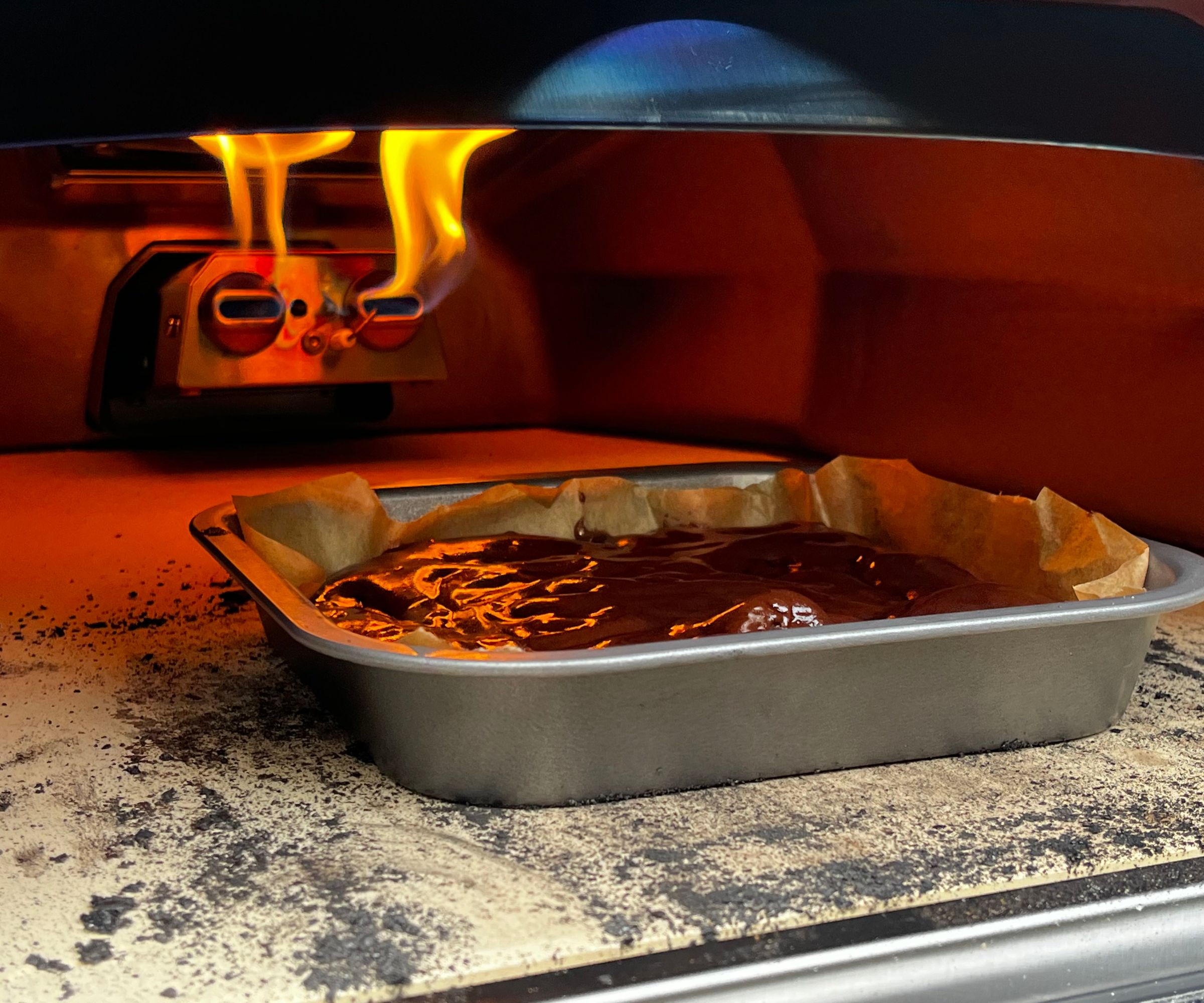
But we end on a slightly disappointing note - brownies were not successful in this pizza oven. We always test something sweet in pizza ovens, because an oven that can only handle savory dishes is pointless. I whipped up a quick box of brownie mix, put it in a greased tin, and let the oven do its thing.
Unfortunately, this was the only disappointment of the day. I kept the flame low and stood guard by the oven the whole time to turn the brownies and stop them from catching. But even with this vigilance the edges of the brownie caught, broiling the top. I took it out after the recommended time.
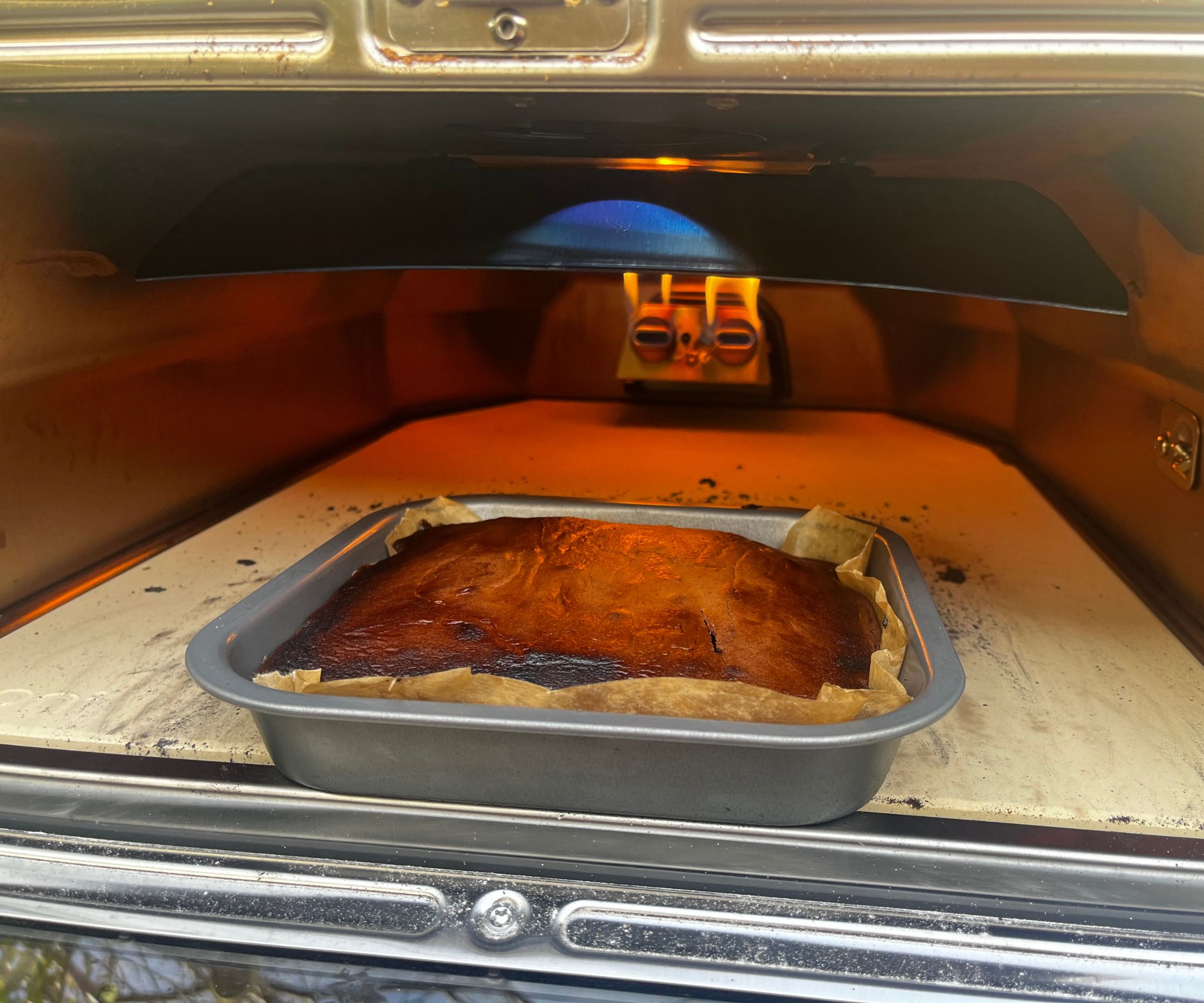
Yet while the thermometer and thermometer gun told me the air and stone temperature had been right for the whole cook, this brownie wasn't quite right. The top was burned, but there was a patch in the middle of the brownies that hadn't cooked.
When I put it back in to finish, it was still the same story. Even on its lowest burn, the flame burned the top of the brownie but didn't cook the interior. I think this oven is perfect for thinner doughs in pizzas, flatbreads, and calzones, but might struggle with thicker bakes. This is poor when you consider that other ovens - the Gozney Arc, for example - can cook desserts with ease.
Cleaning, storage, and maintenance
Cleaning this oven is pretty easy. To be fair, cleaning all pizza ovens is easy because you should only even brush the stone lightly and clean the inside with a microfibre cloth. That said, some readers will have noticed that I spilled some flour on the oven door that then baked on - but it was easy to remove the worst of it with a tiny amount of glass cleaner and a towel.
Maintenance is easy, too - there's basically nothing that needs to be done to this oven except to keep it out of the rain and keep the propane topped up.
The trickier issue is storage. This is one of the largest ovens I've tested, and it's particularly long, taking up the width of my entire garden table. It's also one of the heaviest ovens I've tried, weighing in at 59 lb. It's hardly earth-shattering weight, but it's awkward to move this thing around the yard.
How does it rate online?
The Karu 2 Pro has only been out for few days, so there aren't any reviews of it yet. I'll be sure to update this review in future when there's more consensus from every day users.
How does it compare?
I've compared the new Karu 2 to the original Karu 16, and you can see in the table below that it has a range of tiny improvements that put it above the Karu 16. The most notable is the grandly titled 'Digital Temperature Hub', a sleek LED update on the original digital readout. This is brighter and easier to read, and it also has a probe, which is particularly useful for cooking meat and ensuring that it reaches a safe internal temperature. It has a circle display with colors from green to red to let you know when the oven is hot enough for pizza.
The only downside to this display is that it can be hard to read through the glass door. At noon it was hard to see the temperature reading from the probe because the reflections in the glass obscured the display underneath, but this is a minor issue.
Apart from that, the differences are mostly size and weight. The Karu has slightly larger external dimensions (and I mean slightly, it's a 1% difference) but a much larger internal capacity, but at the same time cuts down on the weight of the original Karu 16, which is remarkable. These minor improvements make for a much better oven overall: it's faster, makes more pizza, and it's easier to use.
Should you buy it?
If you want a pizza oven, the Karu 2 is as good as it gets. It's fast, makes large pizzas, and excelled at almost everything I threw at it. It is the best pizza oven around, especially for the price, which is hundreds of dollars cheaper than equivalent ovens at Gozney. If you want the very best, this is the oven for you.
How we test
We put all pizza ovens through a battery of different tests. Firstly, we see how easy they are to assemble, and if there are any potential issues for those with mobility issues or disabilities. Next, we see how long it takes for the oven to warm up.
Then, we test every oven on a huge range of different dishes. We always make cheese and pepperoni pizzas, as well as sweet treats like brownies and more complicated meals like chicken.
For more detail, take a look at how we test.







